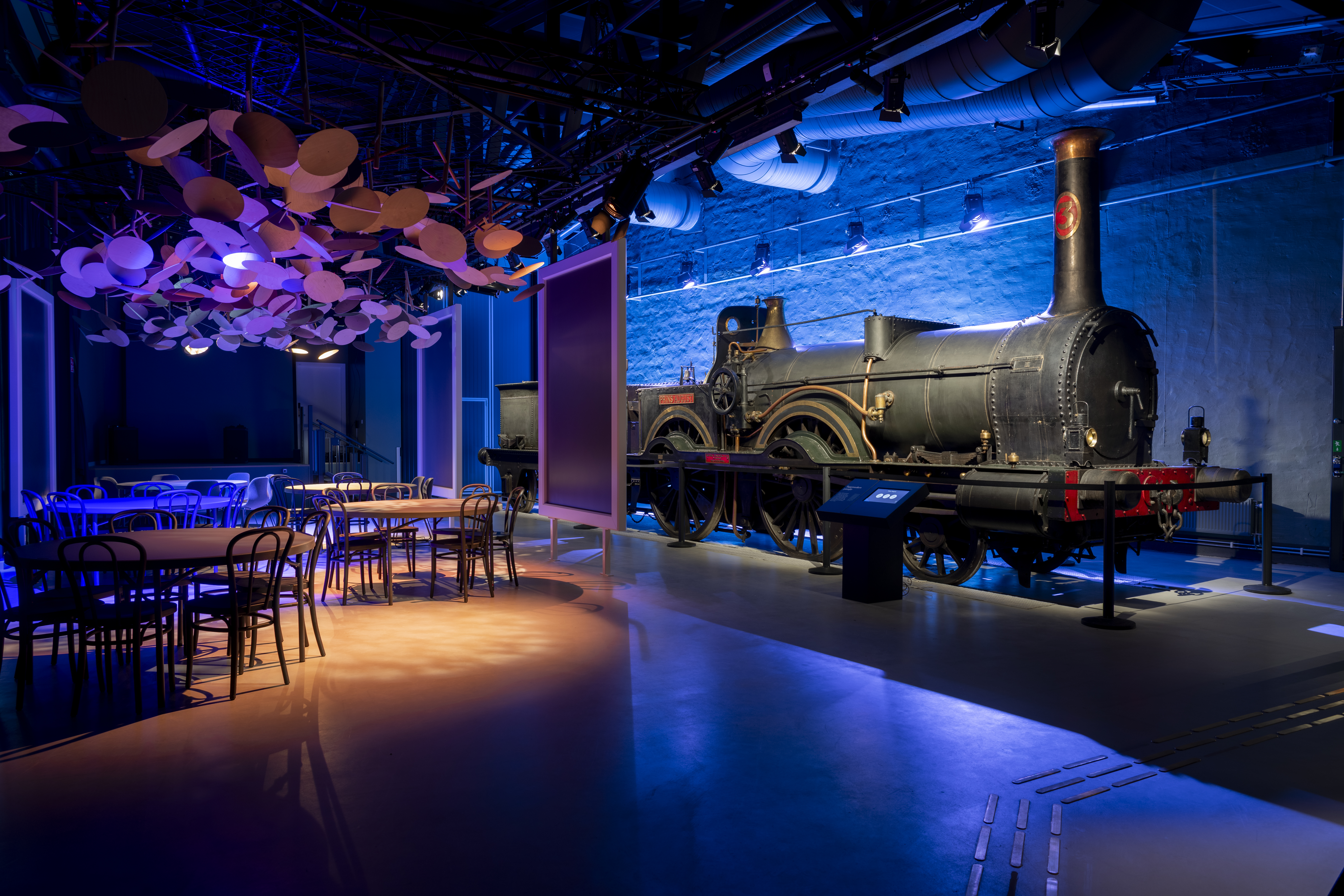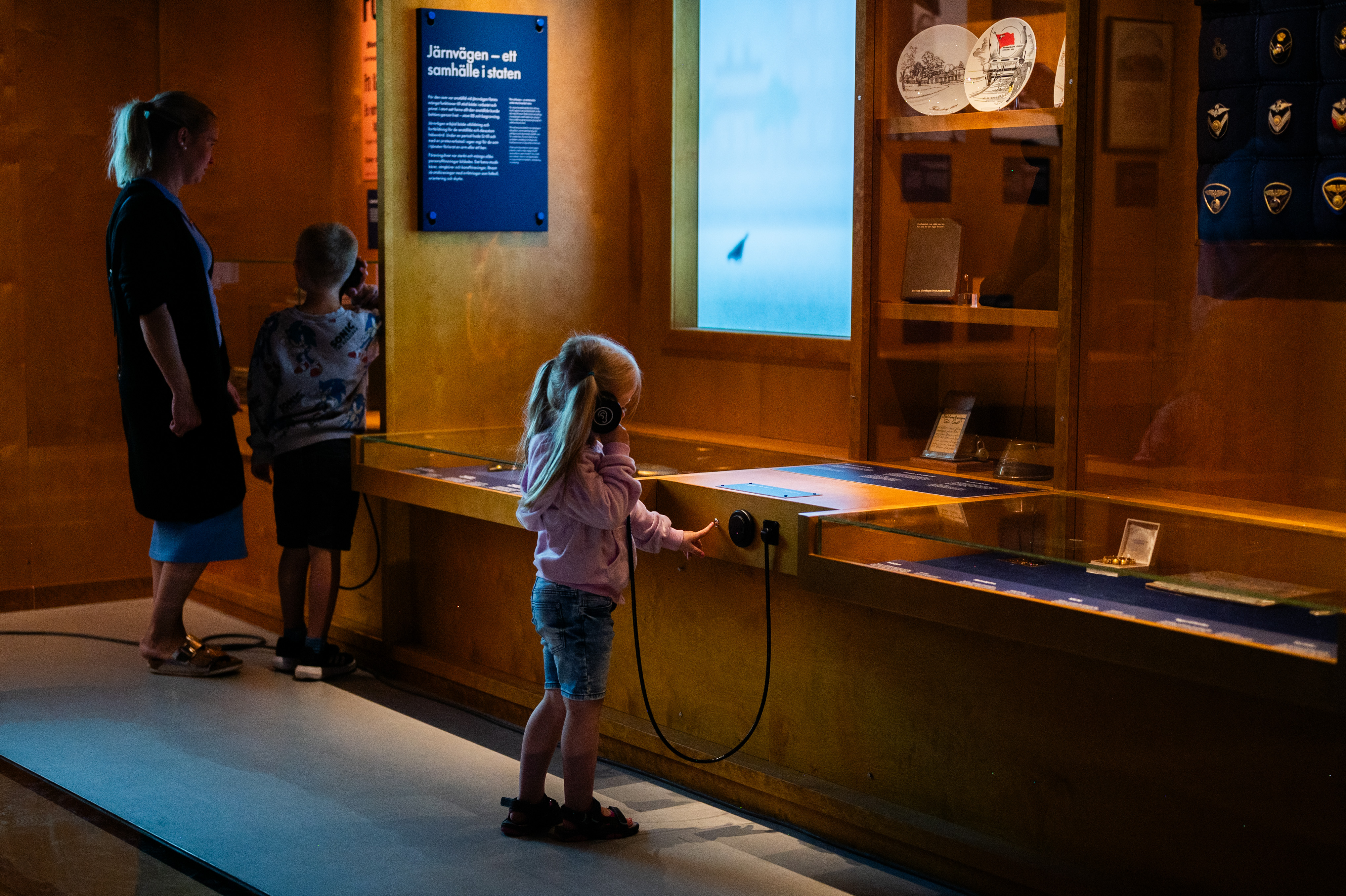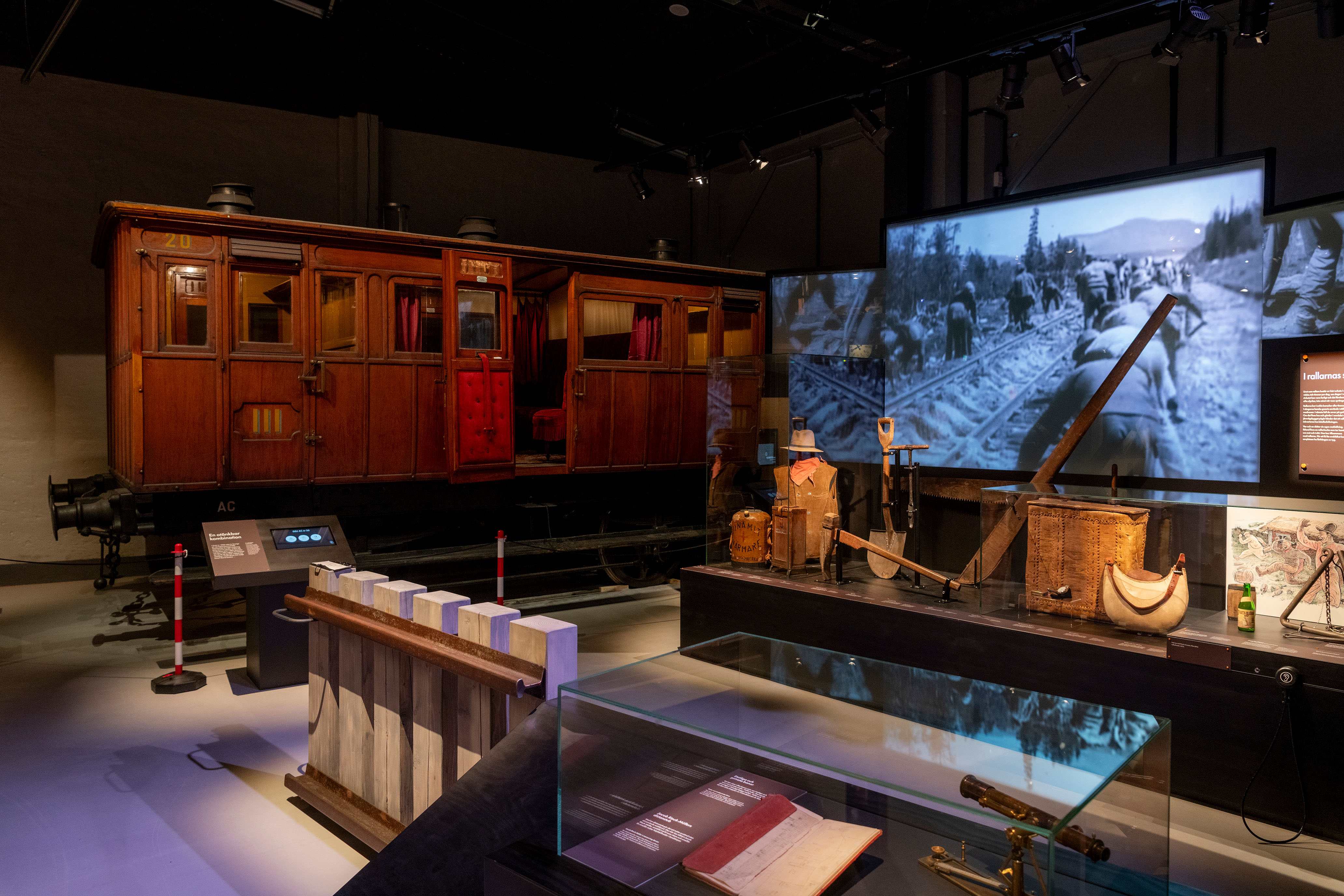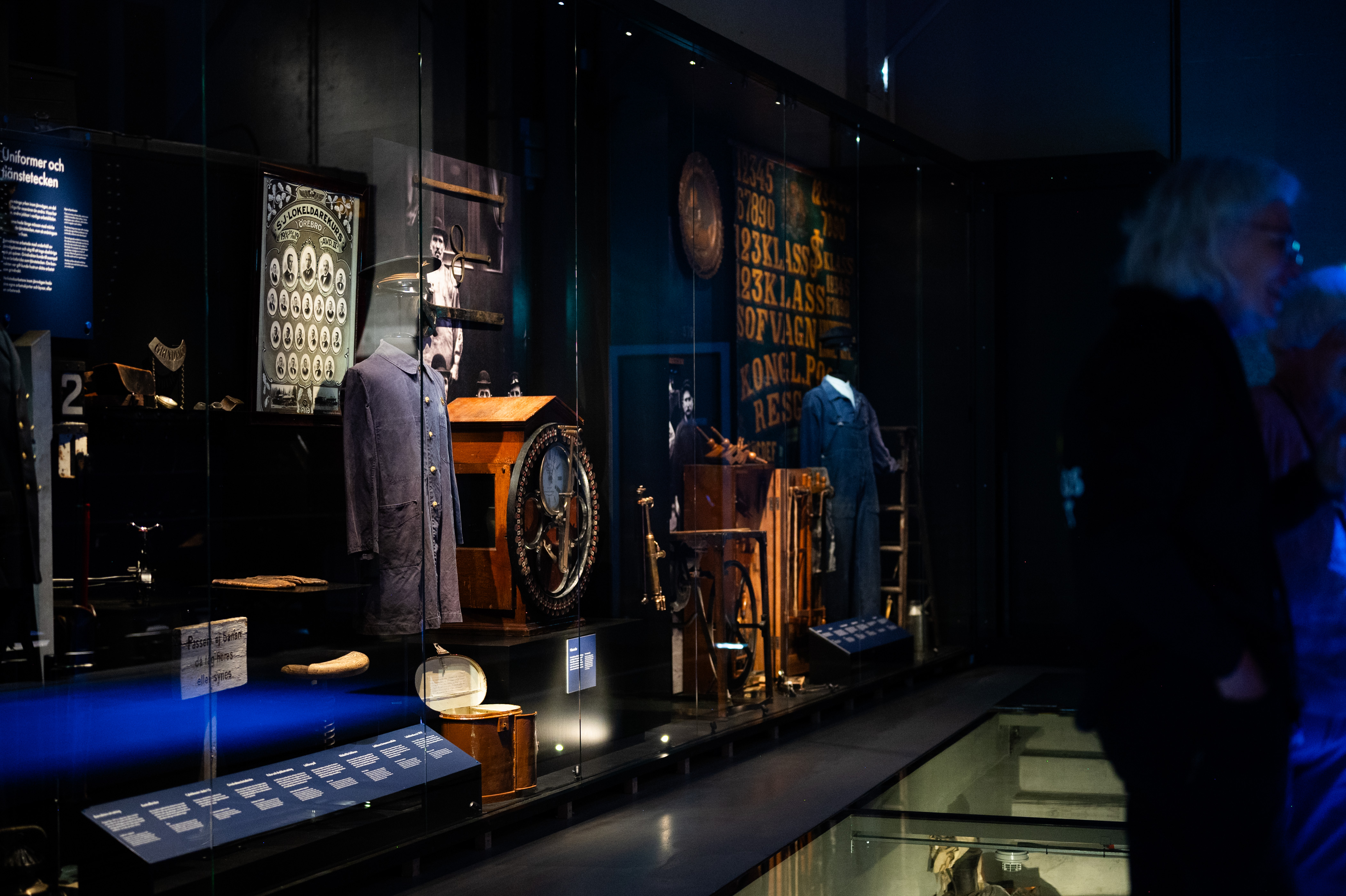
Celebration
Welcome to the opening ceremony! The feast is laid out, the mayor has his speech ready, and the magnificent steam locomotive Prins August is in place.

The Swedish Railway Museum’s exhibitions tell the story of Sweden's railways, its people and its future.
The railway has not only impacted the possibilities for travel and freight transport, but also the development of society, technology, the natural and cultural landscape, and the individual, both historically and today. The story of the railway spans a time when Sweden is developing from an agriculture-based society to a post-industrial nation. It is inspired by the courage and bold visions of individuals, as well as by dreams of experiencing new people and environments.

Welcome to the opening ceremony! The feast is laid out, the mayor has his speech ready, and the magnificent steam locomotive Prins August is in place.

This exhibition tells the story of railway construction – of the contractors who made sure the railway network spread across the country and of the navvies who laid the rails. Here, adults and children alike can try their hand at lifting rails.

Here we meet the people who worked on the railway, which was Sweden’s largest employer at the time.

Sweden has no coal of its own! Well, there is a little. But the country is extremely vulnerable if a crisis were to occur. The railways take this very seriously, and in the 1890s railway electrification begins.

Experience first, second and third class travel in the early 20th century. Here we also show you a marvellous restaurant carriage from the 1930s, painstakingly restored.

The outbreak of World War II creates serious trade barriers. The situation is exacerbated by the German occupation of Norway and Denmark in the spring of 1940. Rail transport becomes crucial to get food and heating fuel to the cities.

Competition with other modes of transport, environmental scandals involving the railway, accidents and safety – threats to the railway increase in the 1960s.

In the last exhibition room, visitors are invited to step into the present with a view to the future. Drive a classic RC locomotive, enter the X2000 and listen to railway music!